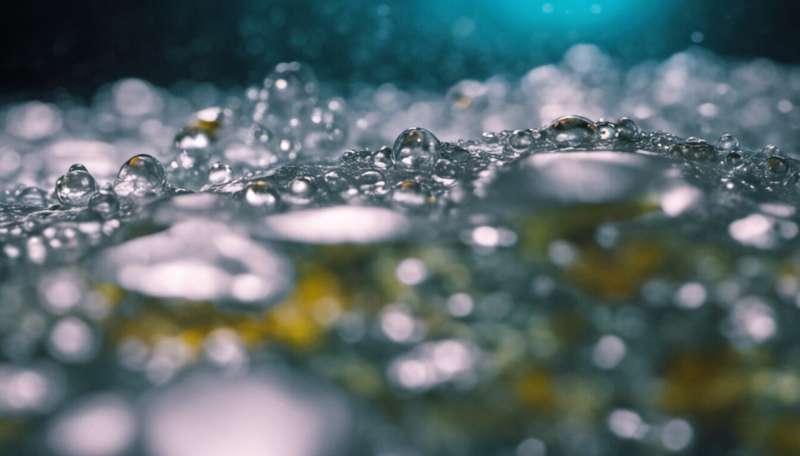This article has been reviewed according to Science X's editorial process and policies. Editors have highlighted the following attributes while ensuring the content's credibility:
fact-checked
peer-reviewed publication
trusted source
proofread
Water purification with biotechnology: Researchers develop new approach by combining fungi and bacteria

Nitrogen, especially in the form of inorganic nitrite and nitrate, is one of the major pollutants in freshwaters and human wastewater. Researchers from the Chinese Ministry of Natural Resources in Xiamen and the IGB have identified a natural fungus-bacteria consortium that metabolizes nitrate particularly efficiently and consistently. This could be crucial for the further development of biotechnological approaches in water treatment and provides further evidence of the important role of fungi in aquatic ecosystems.
The research is published in the journal iScience.
Biological nitrogen removal, denitrification, is an important biochemical process. In this process, microorganisms convert two of the most important nitrogen compounds, nitrate and nitrite, into gaseous nitrogen. This occurs naturally in water bodies through metabolic processes of the organisms living there and is referred to as self-purification. This principle is also used in water treatment.
So far, various bacteria and fungi have been identified in pure culture that can break down nitrogen with and without oxygen. For water treatment, nitrogen degradation in the presence of oxygen is particularly relevant, as it is more cost-effective and can also be implemented on a large scale.
Fungi-bacteria combinations have so far been used mainly for the fermentation of food and beverages. Isolating individual strains of bacteria or fungi is time-consuming and expensive. Combinations of the two, so-called microbial consortia, are considered a promising alternative to pure strains, but are still little researched in the field of denitrification under oxic conditions.
The researchers took this as an opportunity to investigate this potential, as microbial consortia have been used for a long time in the fermentation of food and beverages, for example. Fungi in particular have the advantage of being very robust to environmental stressors such as acidic pH and high temperatures.
The research team identified a natural bacteria-fungi consortium from mariculture that removes nitrate from water very efficiently and consistently. In the presence of oxygen, nitrate removal is up to 100% and denitrification efficiency is 44%. Denitrification efficiency indicates how well microorganisms are able to convert the nitrogen bound in nitrate into molecular nitrogen (N2) and nitrogen oxides.
High-throughput sequencing was used to identify the bacterial and fungal taxa involved in this process. A subsequent network analysis showed which of the present species interact positively with each other and are therefore particularly suitable to be used in combination.
"We succeeded in identifying denitrifying bacterial-fungal groups that have the potential to remove nitrate more effectively. This is an important step in putting together microbial consortia for optimal water treatment," explained IGB researcher Professor Hans-Peter Grossart, co-author of the study.
Since the search for suitable microbial communities of bacteria and fungi is still a very young field of research, so far, there are no practical applications. However, the authors are certain that microbial consortia will significantly shape biotechnology in wastewater treatment in the future.
More information: Xiaotian Zuo et al, Aerobic denitrifying bacterial-fungal consortium mediating nitrate removal: Dynamics, network patterns and interactions, iScience (2023). DOI: 10.1016/j.isci.2023.106824
Journal information: iScience
Provided by Forschungsverbund Berlin e.V. (FVB)





















